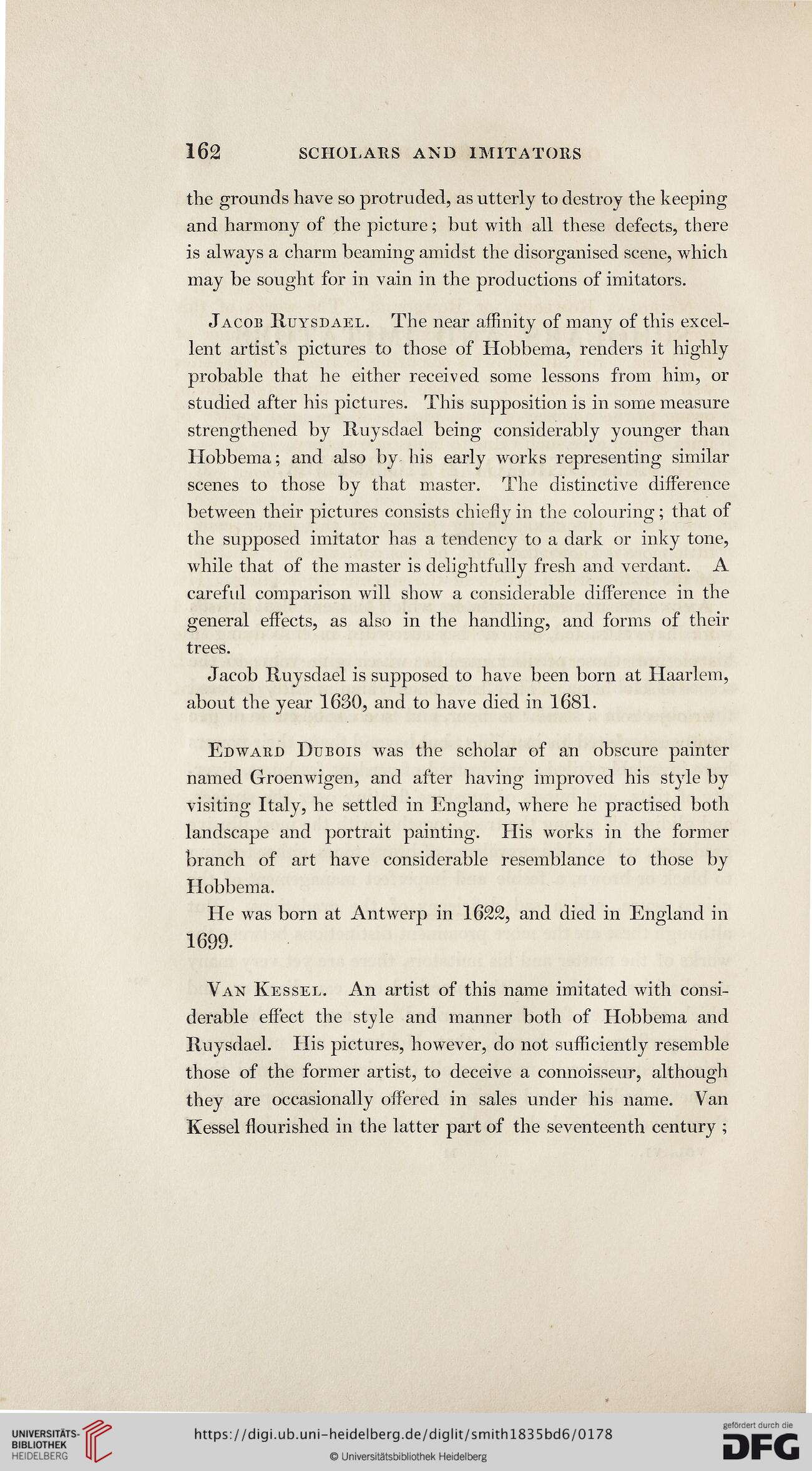162 SCHOLARS AND IMITATORS
the grounds have so protruded, as utterly to destroy the keeping
and harmony of the picture; but with all these defects, there
is always a charm beaming amidst the disorganised scene, which
may be sought for in vain in the productions of imitators.
Jacob Ruysdael. The near affinity of many of this excel-
lent artist’s pictures to those of Hobbema, renders it highly
probable that he either received some lessons from him, or
studied after his pictures. This supposition is in some measure
strengthened by Ruysdael being considerably younger than
Hobbema; and also by his early works representing similar
scenes to those by that master. The distinctive difference
between their pictures consists chiessy in the colouring; that of
the supposed imitator has a tendency to a dark or inky tone,
while that of the master is delightfully fresh and verdant. A
careful comparison will show a considerable difference in the
general effects, as also in the handling, and forms of their
trees.
Jacob Ruysdael is supposed to have been born at Haarlem,
about the year 1630, and to have died in 1681.
Edward Dubois was the scholar of an obscure painter
named Groenwigen, and after having improved his style by
visiting Italy, he settled in England, where he practised both
landscape and portrait painting. His works in the former
branch of art have considerable resemblance to those by
Hobbema.
He was born at Antwerp in 1622, and died in England in
1699.
Van Kessel. An artist of this name imitated with consi-
derable effect the style and manner both of Hobbema and
Ruysdael. His pictures, however, do not sufficiently resemble
those of the former artist, to deceive a connoisseur, although
they are occasionally offered in sales under his name. Van
Kessel ssourished in the latter part of the seventeenth century ;
the grounds have so protruded, as utterly to destroy the keeping
and harmony of the picture; but with all these defects, there
is always a charm beaming amidst the disorganised scene, which
may be sought for in vain in the productions of imitators.
Jacob Ruysdael. The near affinity of many of this excel-
lent artist’s pictures to those of Hobbema, renders it highly
probable that he either received some lessons from him, or
studied after his pictures. This supposition is in some measure
strengthened by Ruysdael being considerably younger than
Hobbema; and also by his early works representing similar
scenes to those by that master. The distinctive difference
between their pictures consists chiessy in the colouring; that of
the supposed imitator has a tendency to a dark or inky tone,
while that of the master is delightfully fresh and verdant. A
careful comparison will show a considerable difference in the
general effects, as also in the handling, and forms of their
trees.
Jacob Ruysdael is supposed to have been born at Haarlem,
about the year 1630, and to have died in 1681.
Edward Dubois was the scholar of an obscure painter
named Groenwigen, and after having improved his style by
visiting Italy, he settled in England, where he practised both
landscape and portrait painting. His works in the former
branch of art have considerable resemblance to those by
Hobbema.
He was born at Antwerp in 1622, and died in England in
1699.
Van Kessel. An artist of this name imitated with consi-
derable effect the style and manner both of Hobbema and
Ruysdael. His pictures, however, do not sufficiently resemble
those of the former artist, to deceive a connoisseur, although
they are occasionally offered in sales under his name. Van
Kessel ssourished in the latter part of the seventeenth century ;




